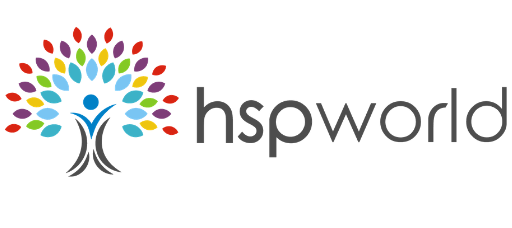
An HSP on Giving Ourselves Permission: Sensitivity and Creativity
I often buy books for my children I love, or books that I want to read but haven’t yet.
A couple of years ago I bought my son “Art & Fear: Observations On the Perils (and Rewards) of Artmaking” by David Bayles and Ted Orland.
My son likes to make art, but won’t call himself an artist because he thinks he’s not good enough.
I like to write, but have a hard time calling myself a writer because I think I’m not good enough. We are frighteningly similar.
Nicholas never read the book. He detoured sharply into “The Hitchhiker’s Guide” series instead. So I took “Art & Fear” from his room about a year ago, and read it myself.
I can’t tell you what I remember about the book. But what I do remember is the feelings.
First there was the “oh yeah, that’s so me” feeling of recognition, of being seen by others just like me; then the “wow, of course” feeling that comes with uncovering the truth of your own obstacles, obstacles shared by other people just like you; and finally (like the downhill sprint before leaping effortlessly over the obstacle) the “oh sure, that’s what I need to do” feeling.
Recognition, permission, and release—the same emotional journey we take when our gym coach posts a “Just do IT” meme, when the latest self-help guru emerges online, or when we’re being sold the perfect car.
The recognition of a profound human condition (“oh yes”) reduced to the factors in a simple equation (“of course!” + “do this!”), promising results like peace of mind.
When it comes to memes, masters, and cars, that equation produces results for a lot of people. Perhaps not the sustained peace of mind as promised, but the math does work.
Some people move from recognition to permission to release over and over again because it’s a smooth ride. And because they often feel like they’ve gotten somewhere. A + B = C. Beginning, middle, comfortable end.
But for HSPs, the journey of recognition, permission and release is not as simple as following an equation.
For HSPs who tend to be creative souls, the path between recognition and release becomes the journey, and becomes the purpose of the creative process. For many HSPs, permission is at the heart of this journey—and often the mountain rising in the middle of the path.
HSPs are born with the gift of recognition. With our heightened sensitivities, we connect with every human condition and emotion, with all the energies around us, and with each subtle rhythm inside us.
We spend every waking moment not only taking in everything, but deciphering the complex layers of meaning inherent in everything.
Recognition at this level is where art begins.
We see a woman standing alone in a park, and from the way her head dips slightly and her fingers knead the hem of her sweater, we can read pages (if not chapters) of her story.
HSPs see poetry. We feel paintings. We touch music. Because it’s as second nature as breathing, we don’t have to work at this part. Sometimes the hard work comes when you want to just go to the grocery store and buy vegetables and make soup. A + B = C without all the elements multiplied exponentially.
But making art is not making soup. Instead of heating up a pot of very specific ingredients, artists need to take in all the exponential possibilities and find some universal truth that we can communicate.
This takes time, and a “cooling off” process—retreating with our recognitions. HSPs like retreat. We need withdrawal. We can sit alone in perfect comfort almost indefinitely. But to create art, you can’t remain comfortable for long.
The next step of the creative process is the discomforting part—permission. The mountain rising out of the mist, a seemingly immovable force; a journey within a journey.
For me, permission comes in two forms: the permission to retreat and sit still (allow creativity out of recognition) and the permission to create art (communicate to others the complexities of meaning happening at all levels).
This two-step of permission becomes a very complicated (and sometimes terrifying) dance. And it’s a dance that doesn’t produce soup for my family. Or peace of mind, either.
When I borrowed that “Art & Fear” book from my son and opened it, the epigraph contained a quote from Gene Fowler, an American journalist, author and dramatist, and it seemed a thoroughly appropriate confirmation of this discomfort.
“Writing is easy: all you do is sit staring at a blank sheet of paper until the drops of blood form on your forehead.”
So really, who would willingly sit around waiting to bleed? Making soup for my family (A + B = C) seems like a much better idea, and much less messy.
I said permission was a dance with two steps. That’s probably not entirely true. Permission, for me, is more like a dance in tap shoes across a minefield. Let me explain.
You see, in my childhood, my parents had no room for high sensitivity, for emotional honesty, for creativity. There was no room for being my true self. I knew, from a very young age, I would never have permission for anything that was important to me.
The only permission I would be granted was the permission to do what my parents expected, to manage unmanageable emotions for them, and to learn how to make soup, since practical matters mattered most.
So I did everything that my parents wanted or expected, and when they were temporarily satisfied, I opened a notebook and poured out my true self on the page. I knew that I would never be granted permission to be my true self inside that house.
Giving myself that permission made me feel powerful, in control of my life. Taking that permission out of the hands of others became an even more powerful motivation, and the key to self-preservation.
Fast forward to adulthood.
I don’t need anyone’s permission to be who I am, to be my true self. I have created my own life, my own sensitive and emotionally honest family. I have even created a place in my life for art again.
But I am used to self-preservation. I am used to creating something from the threat of nothing, wrestling permission away from someone else, and not giving it back.
Giving myself permission (allowing creativity out of recognition) and then handing that permission to someone else (communicating that meaning to others) feels like giving away my power.
The mountain of permission on my creative path often seems insurmountable when giving myself permission leads to permission for others to see me when I emerge on the other side. For someone who fought so hard for permission to be my true self, this seems like surrender. And surrender seems the opposite of self-preservation.
Last spring I took a giant step over the mountain and submitted a one-act play I wrote to a local playwright’s festival. The play was born from another war I had waged, this one with myself over the #metoo revelations on the news and the push-back against them. The play was my attempt to get inside the heads on both sides, to find human beings among monsters. Gene Fowler was right—that process was like waiting to bleed.
When it was finally done, I sat with my piece for a long time. Even though it felt right, I tried writing multiple versions of it.
I felt comfortable with it, then questioned the whole thing, and did this over and over again. Over time, I returned to the version with that “rightness,” with resonance. I gave myself permission to see it as a finished and powerful piece. And then, I hit “submit” and sent it off.
I gave permission to my piece to a group of readers in a room somewhere.
At first, hitting “submit” didn’t feel like surrender. I felt powerful, fully myself.
I had created a sense of deep recognition during the writing of that play, and I felt that recognition resonate inside me, like a deep harmony on all levels. I had faith that I had communicated some deeper meaning, and I hoped it would resonate with others, maybe give them hope, too.
In late summer, four full months after I had climbed that mountain, a response came. Five readers had read my piece. Only two felt it had promise as a play. Three others felt it had some value, but was not valuable as a play. An email said any playwright considered worthy of a reading for the festival would be contacted. No email came.
I have to admit, after climbing that mountain—after finding permission for myself and my work, and after giving the permission to others to read my work—I felt powerless and hopeless again. I had given my permission away, and there was no sense of release, certainly no peace of mind.
But after a few months of wandering, I have come back to the beginning of the path.
I am remembering that this is a journey, not an equation.
A process, not a product. I have learned to give permission to myself, and to others. I have learned that part of that permission is allowing yourself to walk the full path—to climb mountains and fall off them, to stand staring up at the mountain and wonder how you’ll ever climb one again, to climbing one again anyway.
To create something, permit all the gifts of recognition HSPs are given, to find a voice and to speak up, and to give permission to someone else to speak up, too.
For HSPs (and for most artists), permission may be one of the hardest things to find, and the hardest to give. The world doesn’t often provide us permission to sit still, to find deep meaning.
And sometimes we struggle to give ourselves permission to be who we are, to express ourselves in meaningful ways, to dare to create.
For me, permission is still a mountain in the middle of the path. Permission is still a minefield. But for me, too, creating art that connects my deep sense of meaning to my need to connect deeply to others makes climbing mountains seem worth it.
Even doing the two-step in tap shoes seems like a dance worth dancing—even if “…drops of blood form on your forehead.”
As an HSP how have you struggled with giving yourself permission? If you are an artist, do you think permission is part of your creative process? I’d love to hear your story.
Pic credit via Free-Photos






2 Comments
Suzi
Beautiful! Sounds like I need to get that book. Thanks for keeping at it!!!
Tina Hoff
Hi Suzi! Thank you for your encouragement. I’d love to hear what you think of “Art & Fear” if you read it.